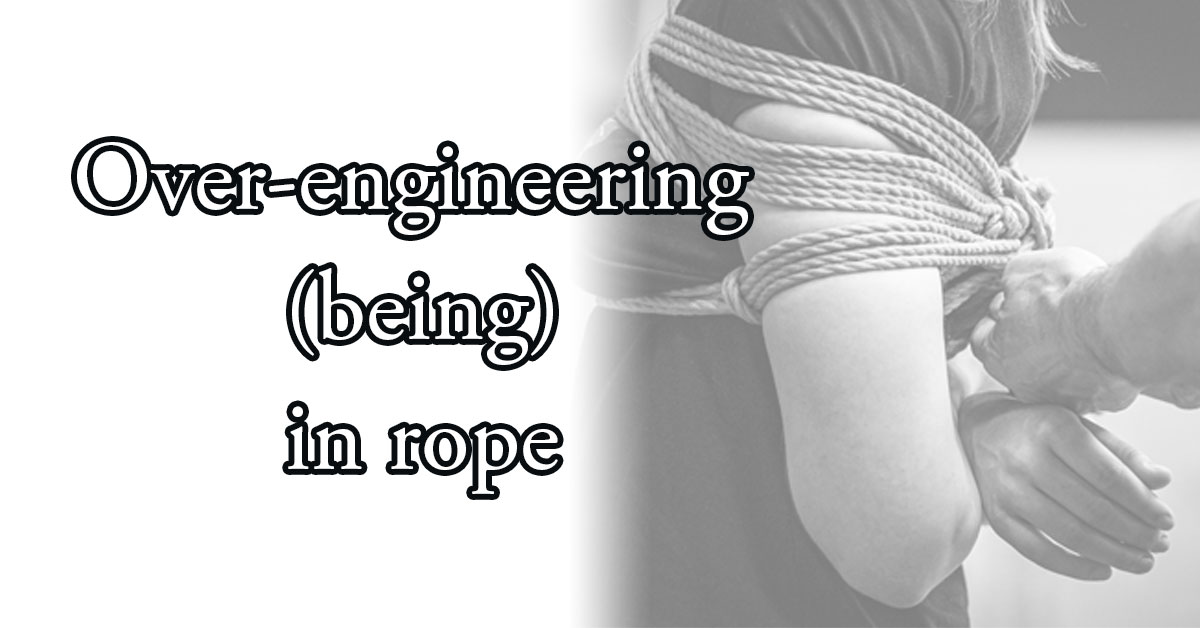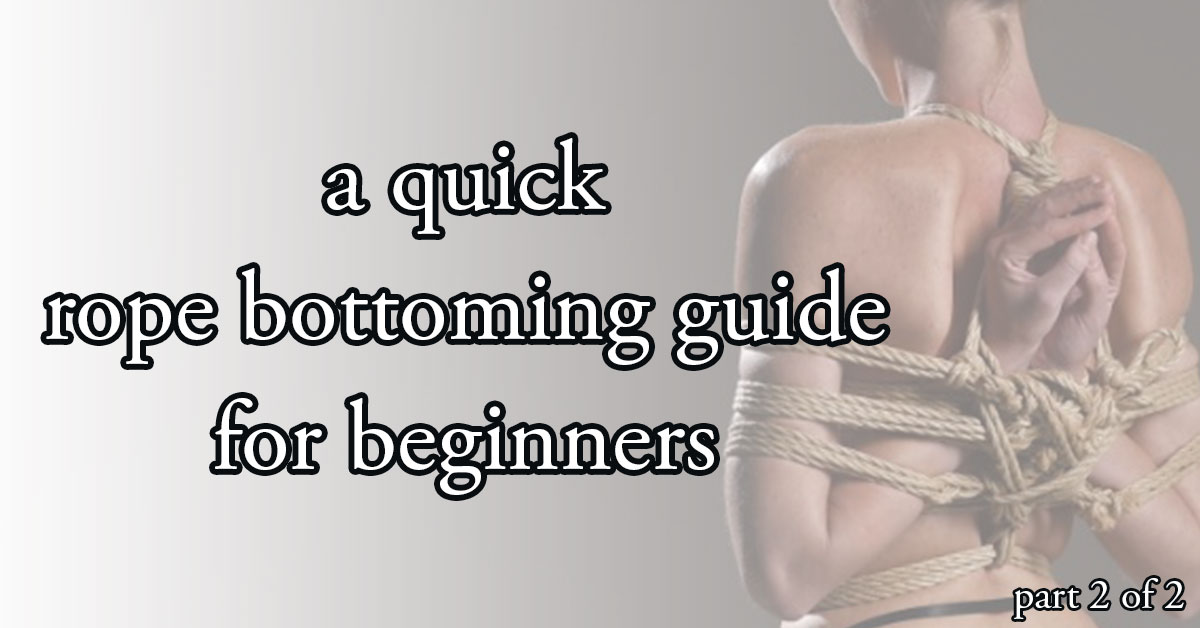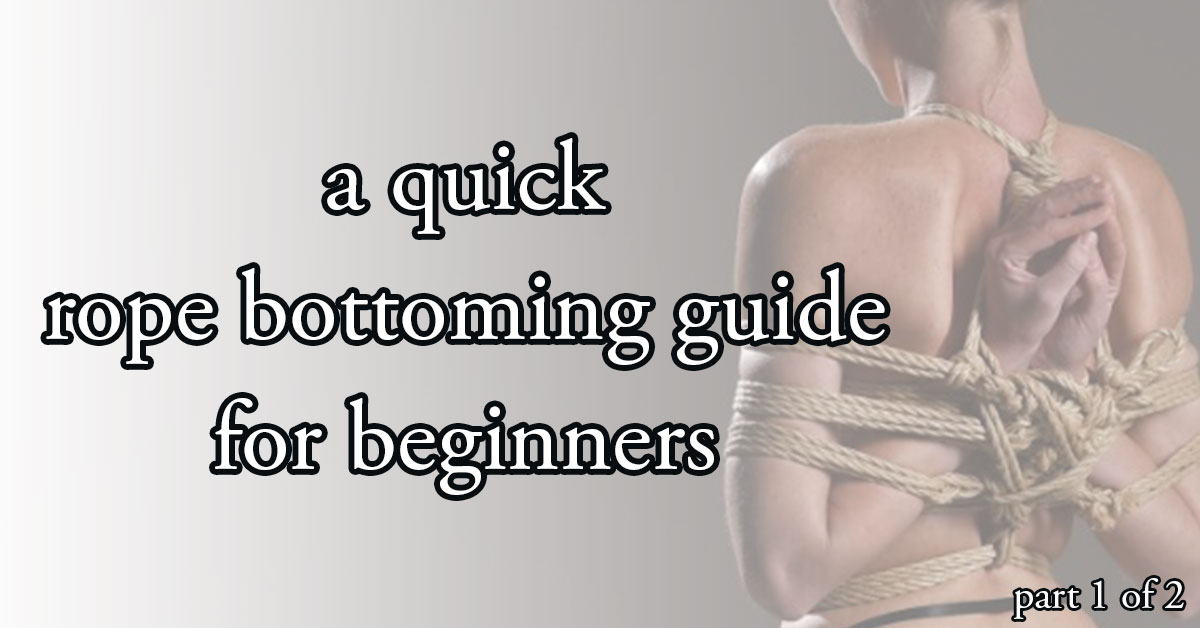There are a few heated threads running at the moment on Facebook and Fetlife. If I have my timeline correct it all started with a now removed thread on Facebook. This thread was restarted on Fetlife and it also spawned a different thread on Fetlife with a more general approach on the subject.
The subject is bondage (*duh* :)) and is is roughly about getting images from the internet and using them for criticism on the subject and moved into a possible copyright infringement discussion. The spawned thread followed-up on what the expectation is when you publicly post material (i.e. through your own website, on social media, physical media – i.e. DVD’s, etc.)
Click on the links above, read up to fully understand the remainder of this post.
Done so? Now continue…
In this post I’m going to be blunt, straightforward and take the bull by the horns (do what I do best, so to speak :)).
First of all, my personal opinion; if you operate publicly people are allowed to critique your publications. Common courtesy is that you do this respectfully. Keep this in mind!
The critiques are that Hebari’s tutorial video is not the best around and that he do better to make an improved version. Esinem is a loud voice in these thread and this continued into Esinem posting a tutorial video of the same tie and asking for critique. Here you can find the two tutorials:
Until now I had never watched and/or reviewed these tutorials in full, just bits and pieces because it was discussed here and there. What I did now was put these two video’s side by side watched and compared them with the intent to post some constructive criticism. Esinem’s tutorial is from fall 2011 and Hebari’s tutorial is from mid 2011. What greatly surprised me is that both tutorials are 100% identical! Each and every movement, every knot and wrap is 100% similar, WTF?!? This took me a bit by surprise and led me to go in a different direction than initially intended when I started watching these videos.
Both Esinem’s and Hebari’s gote are executed in the same way, they make the same movements, the same knots, the same wraps the same cinches, etc. and with “the same” I mean “exactly the same”. I am not talking about who is doing better rope or who is better executing the “kata” or who is building the technically better gote. Hebari got a lot of bad critique about his tutorial but seeing that both tutorials are exactly similar it would make sense that a lot of the critique directed at Hebari could be redirected to Esinem as well. One critique at hebari was that the gote upper wrap was too high…

do your comparison
At first I thought one copied from the other but seeing the time these video’s were first published that seemed unlikely. Then perhaps they have gotten this particular gote from the same teacher? Both Hebari and Esinem openly admit to have taken lessons from Steve and that this is one of the ways Osada Steve is tying a gote. So the only thing I can come up with for now is that both have taken Steve’s lessons and are publishing these lessons one-on-one under their own name. This is where things get blurry for me and I feel we enter a grey area. One word that first popped in my head was plagiarism (the practice of taking someone else’s work or ideas and passing them off as one’s own). I was corrected that it is in fact not that but was not provided an answer of what it is then and wasn’t expecting it since I see this as a very difficult and delicate subject.
Luckily it seems Esinem finds the subject of plagiarism interesting enough to post about it on FetLife. Maybe the answer is found there. I will follow the thread and edit this post if an answer does come up. Personally I don’t know in how far it is (ethically, morally?) correct to take lessons from (in this case) Steve and then put what you learned online using your own name. Is it (ethically, morally) fair? I cannot answer that question what I can say is that this is something that strikes me as incorrect and it would make me feel incredibly… guilty… I guess. Am I alone in thinking like this?
To finish what I saw on both tutorials; each has its own flaws, i.e. the “thumb-crusher” and more in Esinem’s video and a extreme straightening of the gote-stem and more in Hebari’s version. What both video’s make clear for me is that you need to take your responsibility (a great amount) when you publish tutorials. After seeing both video’s I do not consider them more than bad copies of the original source and solely for that reason I would not recommend these to any of the people that come to me for advice. For that I would point them to my own workshops (*plug* *plug* :))
I have great respect for the main participants of this post and I consider this post respectful to both. I also consider this post open and honest about their publication (bull by the horns) and not directed at either of the participants personally.
Here’s one of the RopeMarks gote tutorials produced in 2002 (10 years ago!) as support for our real life tuition. This video is not ment to be a stand-alone tutorial, this video is to be used in the context of our real life tuition. The usual disclaimer applies, mistakes are made in this video and the community and me has grown lots in 10 ten years.
p.s. do not be distracted by the blindfolded, gagged and collared slave girl.
The last bit I would like to mention also started as a thread on Facebook for me. It’s a blog entry by Esinem about what he calls “adjustable single column tie”. On Facebook and his blog entry I feel that he implies that I learned this rope construction from him that I then used in one of my shows. The way I feel it was implicated shot down the wrong way with me. One of the reasons is that I feel my name was used for the better of someone else without me being aware of this or my consent.
I would like to correct: I did not learn this rope construction from Esinem nor do I approve of how he builds this construction (ymmv).
This technique I have been using of and on for a long, _long_, time and the exact source I can not recall. What I do know is that it was a printed Japanese source. For our last show (our Tanuki-show which we premiered on BoundCon IX) I used this technique very prominently.
Since this post we exchanged some some private mails and cleared the air, Bruce has updated his original post to remove what I read as wrong implications. Apparently this particular technique was discussed during my masterclass on the first RopeFest event in St. Petersburg… Seriously… I do not remember… But then again; I do not even remember what I taught the people during my private workshop last night… With this I tend to go with the flow, extract current levels and desires, listen and take things from there to make the most of each teaching experience for the participant…
…and this last is taking things where they should go, rope!
Edit 1: Updates from insight and information from the different forum’s and comments.
Edit 2: Updates from the messages in my private mailbox on this entry.











Thanks for the amendments. As you’ll see from my annotations on my video originally shot July 2011, I did point out the flaws you mention 🙂 I am the first to admit I’m not perfect, nor do I know it all. As with everyone, I hope, my tying moves on as I recognise things that can be improved. Often, it takes others to point them out. This what we pay teachers for but I’m trying to engender a freer exchange and greater introspection.
Actually, Steve has never expressed any problem with me teaching ties (heavily) based on his. I tend to diverge more on the third rope, leaning more to Kazami/Kinoko’s way these days. Although, I’m also experimenting with my own versions in the older style look.
Updated and edited this entry with comments left here, on Facebook, FetLife and my mailbox (thank you all for stress-testing my mail-server 🙂 ). Should I have missed some comments don’t hesitate to point that out to me and I’ll process them as well.
Oops! I see I made a further update on 5 Jan which didn’t get published . I just discovered the autosaved version:
“I’m not claiming uniqueness. I wouldn’t be in the least surprised if others have come to the same solution but I have yet to see it. Bob Ropemarks commented:
“This is a very common technique that I’ve seen used by Miura-san for sure and I think Marato- and Naka-san and Osada-san (The Eikichi one, not the Steve one). In my workshops and classes I’ve been using this “technique” in more elaborate ways including stacking. The one difference between how I use it with what Bruce is showing here is locking the first knot instead of making it “sliding”, the “sliding” knot will not hold well with transitions and can tighten around the limb.”
In my experience, the wraps do not tighten as the bight passes under the them and equal load is applied to each side. Although, I agree that with certain types of movement tightening is possible. It could be affected by factors like the type of rope, how much tension is on the tie, how many changes there are in the direction of load and so on. The answer is to see if it works for you.”
As Hebari has already pointed out, your “logical conclusion” is an assumption 😉
As you corrected me, saying you were familiar with a fixed version of my adjustable tie, I amended the post to say that immediately. Although, according to Nina, we discussed your and my methods in your workshop in St Peterburg. Apologies for any misunderstandings.
Amended post said “I’m not claiming uniqueness. I wouldn’t be in the least surprised if others have come to the same solution but I have yet to see it. Since posting this, it has been suggested that Bob Ropemarks might have done something similar; how similar I have yet to discover (Nina: Marvo the Memory Man showed Bob this at Ropefest!).”
I will happily add additional comments to clarify this further.
If you feel that I am using your name to “better myself” in any particular post, please let me know as I have no wish to create such an impression. I feel able we are both able to stand on our own merits and I have no desire to fall out with you. Regardless of any mutual piss-taking, believe it or not, I happen to like you and have a lot of respect for you and your work.
I am waiting for the correction of this article!
@Hebari I’ll edit the post to be more correct. Just a quick question, did you take lessons from Steve?
@Ropemarks: Yes several over the years, the first at the start of 2011 from memory and the most recent at Studio6 in October
An interesting post though a few points need to be addressed.
– Posting times, the original video I posted was on youtube and was removed, the creation date was mid 2011. – I’d never actually seen Esinem’s tutorial, in fact as far as I am aware it was only posted on the Internet recently. I would attribute the similarity to the same source ie Osada Steve’s method
In terms of the critique I’ll just take it as advice and listen for your comments on the next one 🙂
I greatly respect your open and transparent way of sharing Bob.
Both tutorials, or all 3 I should say, we will examine.